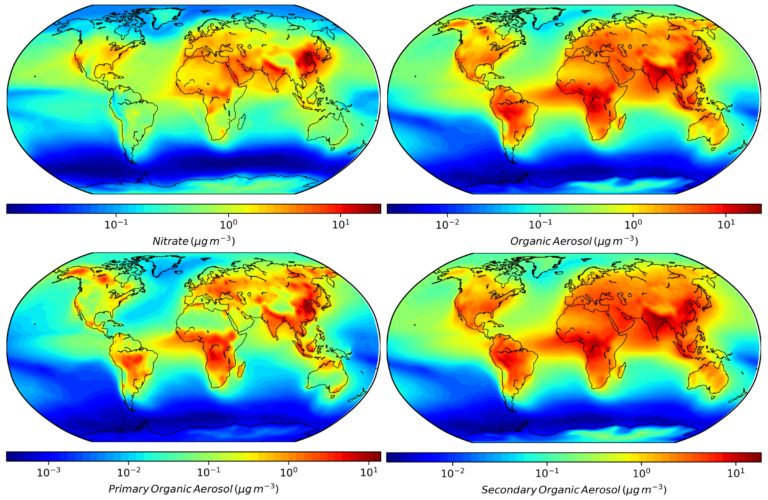Co-led by Astrid Kiendler-Scharr (FZJ) and Spyros Pandis (FORTH)
This work package aims to improve the representation of aerosol processes in the FoRCeS earth system models with the ultimate goal of increasing the accuracy and reducing the uncertainty in simulated aerosol effective radiative forcing. To do so, we will target the uncertanity that is due to missing or misrepresented processes.
Four key species and targets have been selected – organic aerosol, nitrate aerosol, brown carbon, and ultrafine aerosol growth.
This WP will address the following key questions:
1) Which key processes (e.g. chemical evolution of organic aerosol and brown carbon, atmosphere-biosphere interactions, etc.) and factors (e.g. emissions, optical properties) are not well represented in state-of-the-art earth system models used for climate projections?
2) How can we better simulate these key aerosol processes in earth system models using the appropriate level of detail? Are there also processes that we can simplify?
3) Which processes and factors are responsible for the largest uncertainties for aerosol radiative forcing?


